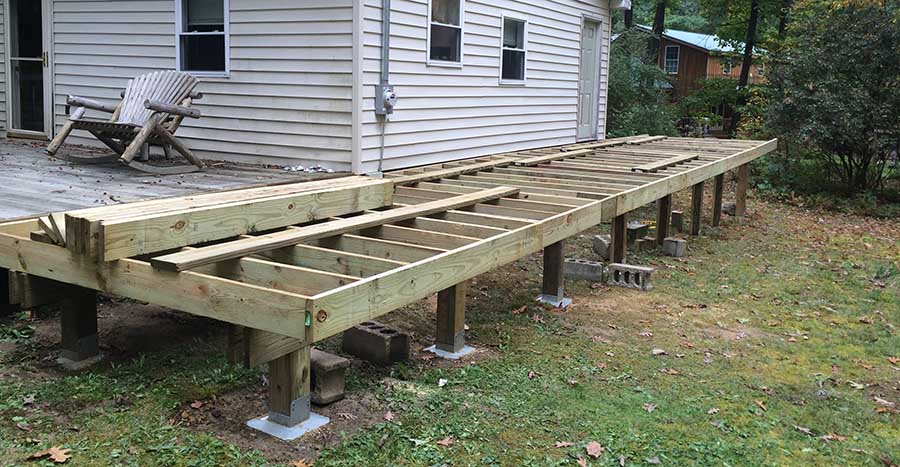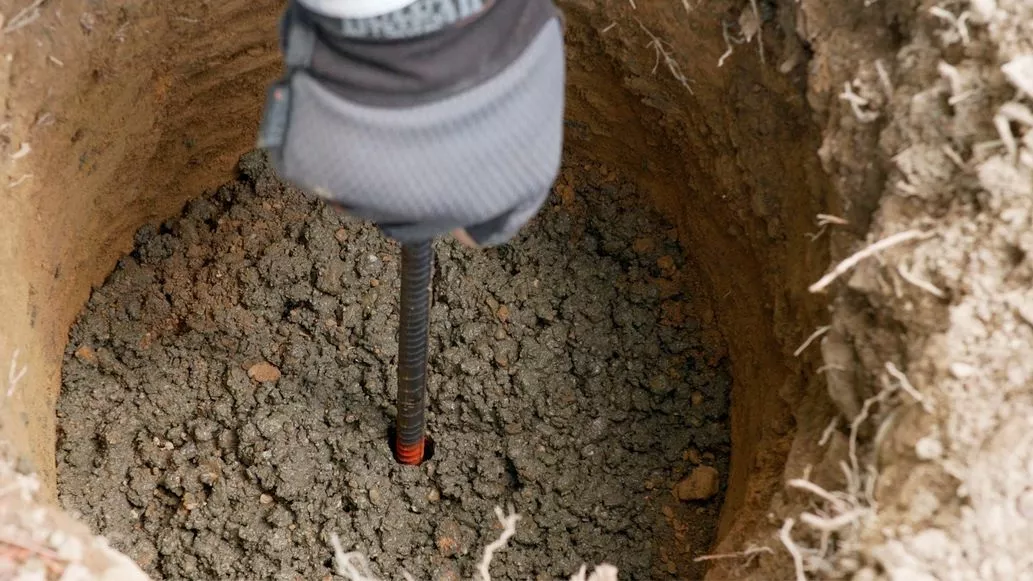Deck Footings Demystified: Your Blueprint for a Safe, Durable Outdoor Sanctuary
Deck Footings Demystified: Your Blueprint for a Safe, Durable Outdoor Sanctuary
Blog Article
Make Certain Stability and Longevity With Correctly Installed Deck Grounds
Deck footings might not be the most attractive element of deck building, however they play a vital duty in making certain security and long life. Correctly set up grounds offer a strong structure for your deck, preventing usual problems like drooping, moving, and even collapse. Nonetheless, choosing the best sort of ground and appropriately installing it can be a complicated process. In this discussion, we will check out the importance of proper deck grounds, elements to think about during setup, various types of footings available, detailed setup overview, and upkeep tips for making certain long-lasting grounds. So, if you wish to guarantee the security and longevity of your deck, keep checking out to find the vital understandings to accomplish a long lasting and structurally sound outside space.

Significance of Appropriate Deck Grounds
Why are effectively mounted deck footings critical for the stability and long life of your deck? Deck footings are the structure on which the deck rests, moving the tons from the deck to the ground.
To start with, effectively installed deck footings distribute the weight of the deck evenly, preventing any uneven settling or sinking. This is specifically important in locations with unstable soil, as it assists to alleviate the threat of the deck breaking down or moving. In addition, well-installed footings make sure that the deck continues to be degree, protecting against any structural damages that can take place when a deck becomes uneven.
Second of all, appropriately set up grounds offer a strong support for the deck, preventing excessive movement and persuade. This helps to preserve the structural stability of the deck, minimizing the danger of crashes or injuries. It additionally decreases the deterioration on the deck, permitting it to hold up against the components and normal use for a longer time period.
Elements to Think About for Deck Ground Installment
When installing deck grounds, there are numerous important elements to consider for proper installment. Different soil types have different load-bearing abilities, so it is critical to conduct a soil test to make sure the footings can sustain the weight of the deck and its owners. By taking into account these variables, you can make certain the appropriate installation of deck grounds and delight in a lasting and stable deck.
Kinds Of Deck Grounds to Choose From
There are a number of various sorts of deck grounds offered for you to select from. Each kind has its very own advantages and downsides, so it's crucial to consider your particular requirements and the problems of your deck prior to choosing.
One typical kind of deck ground is the concrete footing. This entails digging holes in the ground and putting concrete right into them to create a strong structure. Concrete grounds are sturdy and provide excellent stability, making them suitable for decks in locations with tough dirt conditions or high wind lots.
One more option is the helical pier footing, which consists of a steel shaft with helical plates that are screwed right into the ground. These grounds fast to install and can be utilized in numerous dirt kinds, consisting of sandy or clay dirts. They are also flexible, enabling simple leveling of the deck.
Sonotube grounds are one more popular choice. These footings are created by putting a cardboard tube in a hole and loading it with concrete. Sonotube footings are relatively very easy to mount and give ample security for smaller sized decks or in locations with much less demanding soil problems.

When picking the kind of deck ground, it's important to consider factors such as dirt problems, deck size and weight, regional building regulations, and personal choices. By choosing the appropriate footing kind, you can make certain the stability and long life of your deck.
Step-by-Step Overview for Installing Deck Footings

Figure out the area: Start by marking the precise setting of each footing utilizing risks and visit this site string (Deck Footings). Take into consideration any type of neighborhood building codes or regulations pertaining to setback distances
Dig the holes: Utilize a post hole miner or an auger to dig the openings for the grounds. The depth will rely on the frost line in your area and the type of dirt. Generally, a depth of at the very least 36 inches is suggested for security.
Degree the openings: Make sure that the bases of the holes are degree (Deck Footings). This can be attained by making use of a degree or a straight board across the top of the holes
Include crushed rock: Area a layer of crushed rock at the base of each opening to boost drainage and prevent the footing from sinking into the dirt in time.
Insert the ground kinds: Put the footing develops into the holes, guaranteeing they are centered and level. Use risks to safeguard them in position.
Mix and put concrete: Adhere to the guidelines on the concrete mix bag to prepare the concrete. Put the concrete right into the footing forms, loading them entirely.
Smooth the surface: Use a trowel to smooth the surface area of the concrete and get rid of any kind of air pockets. Enable the concrete to cure according to the manufacturer's instructions.
Upkeep Tips for Resilient Deck Grounds
Correct maintenance is crucial for guaranteeing the longevity and stability of deck grounds. By regularly inspecting and keeping your deck footings, visit this website you can stop damages and potential security hazards. One essential aspect of upkeep is to regularly inspect for any signs of deterioration, such as splits or activity in the footings. It is important to resolve them without delay to stay clear of further damage. if you notice any type of issues.
Routine cleansing is also vital for keeping deck grounds. Dust, particles, and vegetation can build up around the footings, which can cause moisture buildup and decay. Cleansing the grounds consistently, making use of a brush or a pressure washer, can aid prevent these concerns and expand the life-span of your deck.
Along with cleansing, it is necessary to keep the area around the grounds clear of any type of obstructions. Prevent piling items against the grounds or enabling plants to expand also near to them. These blockages can catch wetness and trigger the grounds to weaken with time.
Finally, routine resealing of the footings is advised to secure them from dampness and various other ecological variables. Using a water-proof sealer can assist avoid water damages and prolong the lifespan of the footings.
Final Thought
In final thought, proper installment of deck footings is vital for making certain security and durability of your deck. Factors such as dirt kind, tons capacity, and neighborhood building regulations need to be taken into consideration when selecting the appropriate kind of deck footings. Adhering to a detailed guide for installment and routine upkeep will aid to make certain the grounds stay resilient and sturdy.
In this discussion, we will certainly check out the importance of correct deck footings, variables to think about throughout setup, various types of footings readily available, detailed installation overview, and upkeep tips for making certain long-lasting footings. Deck grounds are the foundation on which the deck relaxes, moving the load from the deck to the ground.One common type of deck ground is the concrete ground. Insert the footing types: Put the ground develops into the openings, guaranteeing they are centered and degree.In final thought, correct setup of deck grounds is vital for guaranteeing security and longevity of your deck.
Report this page